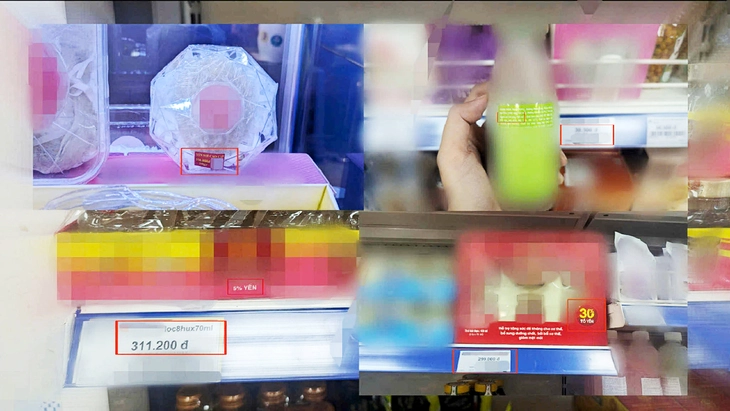
The market has many types of bird's nest with different quality and prices, making consumers confused - Photo: BUI NHI
Taking advantage of consumers' belief that eating bird's nest is good for health, the bird's nest market is bustling everywhere, especially on the internet.
Cheap price but bird's nest content up to 40-50%?
Recently, a TikToker advertised a type of bird's nest containing up to 35% bird's nest at a price of just over 13,000 VND/jar, this person received a series of orders through livestream sessions. This made many consumers question the real quality of the product.
In many markets in Ho Chi Minh City, it is not difficult to find pre-cooked bird's nest, packaged in attractive boxes. Holding a box of bird's nest in hand, the seller advertises that it is a product originating from a famous bird's nest brand, with a long shelf life, and especially containing 25% bird's nest.
With 6 convenient pre-cooked bird's nest jars (70ml/jar), buyers only need to spend 20,000 - 30,000 VND to own this product containing many healthy ingredients.
In the "online market", this product is extremely diverse in both form and price. Depending on the type of raw bird's nest or pre-cooked bird's nest, the quality of the bird's nest, the price can range from a few tens of thousands/jar to a few million VND/tael of raw bird's nest.
On a large e-commerce platform, a box of 6 jars of stewed bird's nest is advertised with winged advertisements containing up to 39% bird's nest, suitable for many subjects from children, the elderly to pregnant women, and sick people needing to recover. With a high bird's nest content, 420ml volume, but the price of this product is only approximately 150,000 VND/6 jars (equivalent to about 25,000 VND/jar).
Similarly, a pack of 8 jars of stewed bird’s nest (70ml/jar) with rock sugar and cordyceps is sold for only 89,000 VND/pack, equivalent to about 12,000 VND/jar. Meanwhile, the equivalent bird’s nest content in this product is advertised to contain 30%.
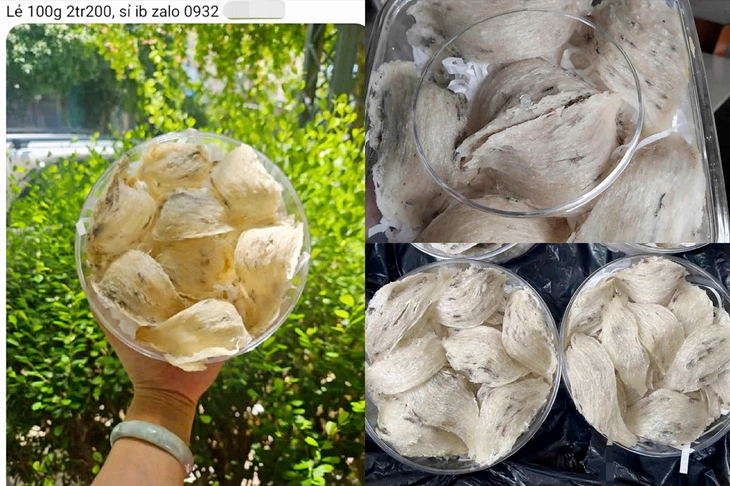
Bird's nests without labels, unclear origin and difficult to distinguish between real and fake are sold widely on social networking sites - Screenshot
Real and fake raw bird's nest are hard to tell.
For raw bird's nest, depending on the quality and condition of the bird's nest, whether it is beautiful or ugly, with few or many feathers, there will be different prices. With 50 grams of raw bird's nest, it is sold from more than 500,000 VND to several million VND.
According to one supplier, 50 grams of "raw broken bird's nest, few feathers" costs 960,000 VND and "VIP super few feathers" costs 1,495,000 VND. For the same weight, for "large broken raw bird's nest", another store sells it for 700,000 VND.
It is worth mentioning that in many groups on the social networking site Facebook, such as the national bird's nest market, bird's nest buying and selling, Ho Chi Minh City bird's nest association... raw bird's nests in boxes, without labels, origin and source are sold everywhere, at shockingly cheap prices.
Some customers, because of their "cheapness", mistakenly bought fake bird's nests made from vermicelli, tragacanth gum... Listening to the advertisement of bird's nests with a shocking discount from 980,000 to 490,000 VND/50 grams, an account named A. "fell into the trap" of this scam. When discovering that the raw bird's nest received had unusual signs, this person immediately contacted the store but was blocked afterwards.
Fake bird's nest can cause cancer
Speaking to Tuoi Tre, Dr. Huynh Tan Vu, University of Medicine and Pharmacy, Ho Chi Minh City, said that in reality, there are 3 types of bird's nests on the market today: natural bird's nests (or island bird's nests), house bird's nests, and fake bird's nests. Specifically, natural bird's nests are the most valuable because of their low yield and dangerous exploitation process.
House swiftlets are the type raised in birdhouses. Swiftlets are brought to live, build nests and remain wild during this process. Thanks to that, the nutritional content in the nests is not inferior to that of island swiftlets. Fake bird's nests are the type that are mixed with other substances such as seaweed, pork skin gelatin, fish skin... affecting the health of users.
Doctor Vu said that in the early stages of using fake bird’s nest, the body hardly shows any bad signs. However, if you accidentally eat bird’s nest soaked in bleach of unknown origin, you may have a stomachache and even increase the risk of cancer.
Some types of bird's nests are contaminated with impurities such as H2O2 (a banned substance in food) and experts warn that they can damage the stomach lining, cause liver failure, kidney failure, and intestinal cancer.
Master, Doctor Le Ngo Minh Nhu, University of Medicine and Pharmacy Hospital, Ho Chi Minh City, Campus 3, said that bird's nest or bird's nest contains many types of amino acids and many trace elements (iron, calcium, sodium, zinc...) that are good for health. Bird's nest has the effect of enhancing resistance, restoring lung function after illness, preventing physical weakness, promoting digestion, stimulating taste buds, and enhancing the absorption of nutrients...
Many people think that bird's nest is a tonic, a nutritious food that contains many nutrients, so the more you eat, the more benefits you will get. However, for the elderly or patients undergoing treatment, it will have a negative impact on the digestive system, leading to difficulty in absorption, indigestion, abdominal pain, and diarrhea.
Therefore, people with diseases such as dermatitis, acute bronchitis, urinary tract infections should not use bird's nest. The reason is that when our body is weak, the invasion of bacteria into the body leads to inflammation. When the body is sick, you should stop using bird's nest.
We should nourish our body with bird's nest when we have recovered from illness. At this time, our body is ready to receive the necessary nutrients to restore health. Using bird's nest when the body is ready is the most effective therapy.
If children use bird's nest, it will increase the burden on the child's digestive system, making it unable to absorb nutrients. Using it like that is both wasteful and affects the child's health.
The fetus under 3 months old is still very weak and unstable, so pregnant mothers should not use bird's nest. From the 4th month onwards, mothers can use bird's nest to supplement nutrients for both mother and child.
How to distinguish fake bird's nest?
According to Dr. Vu, the outstanding feature of real bird's nest is the overlapping, interconnected layers of fibers that look like loofah fibers. The interwoven bird's nest fibers can form an arc shape.
Meanwhile, fake bird's nest is made from a mixture of sugar and starch, so the bird's nest fibers look unnatural and unreal. The fake bird's nest fibers are interwoven together much more tightly and are much smoother than real bird's nest.
Some ways to distinguish:
Taste and check the sweetness of the bird's nest: just take a small strand of bird's nest and taste it. If the strand of bird's nest is not too sweet, it tastes like egg white, then it is real bird's nest. If the bird's nest tastes sweet, then it is definitely a low-quality bird's nest that has been mixed with sugar to create stickiness.
Examine the bird's nest under sunlight: real bird's nest under sunlight, the bird's nest fibers are opaque white and light can pass through.
As for fake bird's nests, when exposed to light, the bird's nest fibers will reflect light and have a transparent white color.
Identify by the expansion of the bird's nest: on average, real bird's nest will expand 6 times when soaked in water. When steamed for 30 to 40 minutes after expansion, real bird's nest fibers will never dissolve. In contrast to fake bird's nest, after being processed, it will only expand very little because it is covered with impurities, so it becomes rough and cannot expand.
Source: https://tuoitre.vn/yen-sao-gia-re-tran-lan-chat-luong-mo-ho-20250616080236393.htm



![[Photo] Students of Binh Minh Primary School enjoy the full moon festival, receiving the joys of childhood](https://vphoto.vietnam.vn/thumb/1200x675/vietnam/resource/IMAGE/2025/10/3/8cf8abef22fe4471be400a818912cb85)
![[Photo] Prime Minister Pham Minh Chinh chairs meeting to deploy overcoming consequences of storm No. 10](https://vphoto.vietnam.vn/thumb/1200x675/vietnam/resource/IMAGE/2025/10/3/544f420dcc844463898fcbef46247d16)



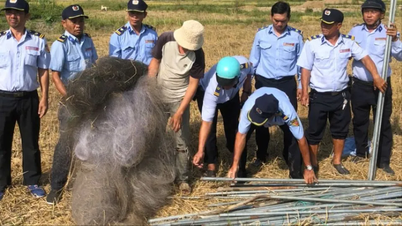

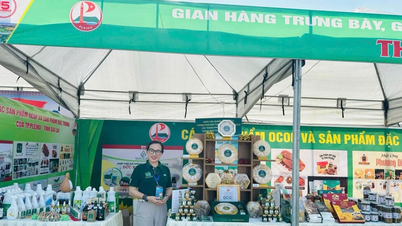

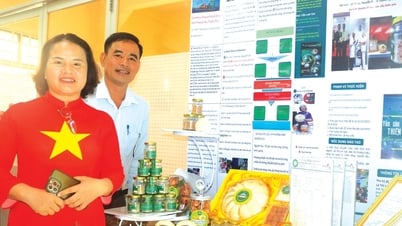

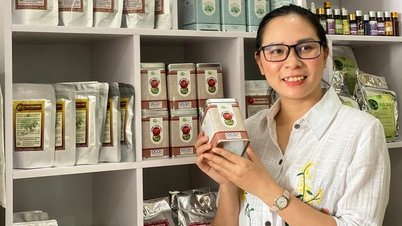



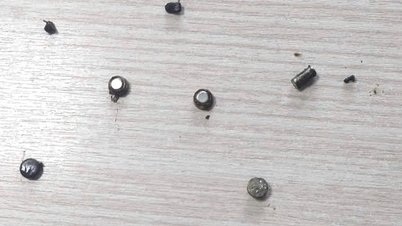

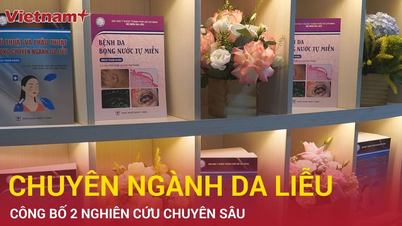

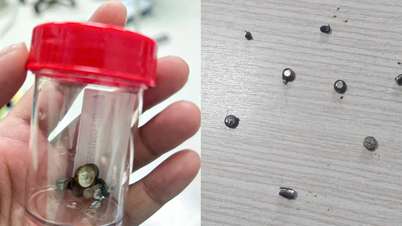
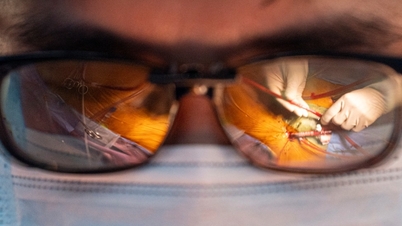

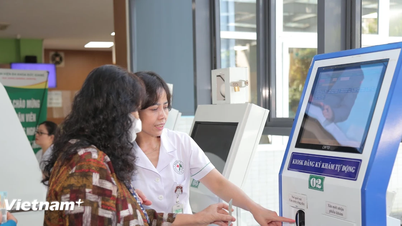



























































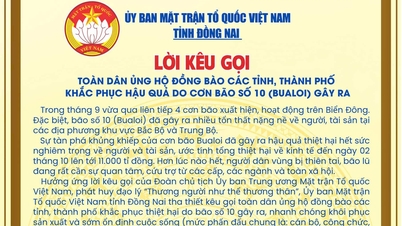


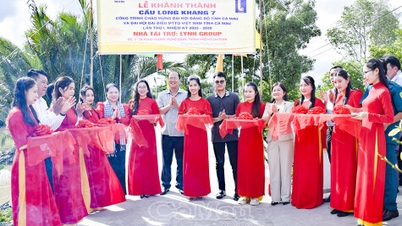


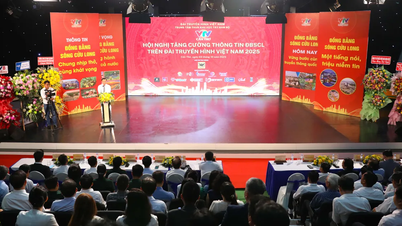












Comment (0)